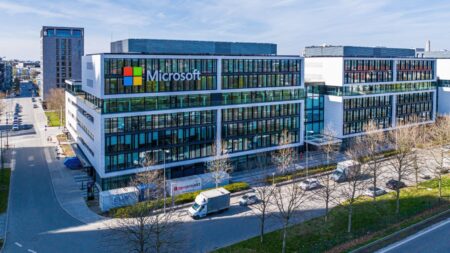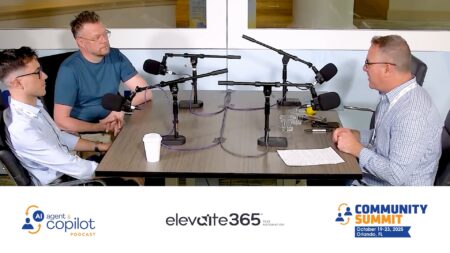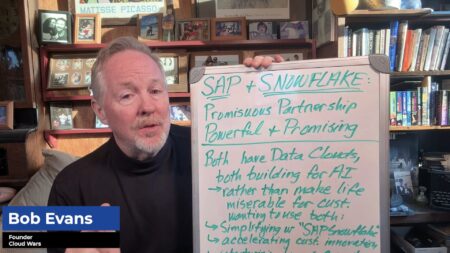For any company that’s been through an ERP upgrade involving millions of lines of code, plus years if not decades of customizations, time and costs that exceed forecasts are not unusual.
That makes it even more impressive, then, that JBS USA, a $71-billion food producer, estimates it saved “upwards of 30,000 man-hours” of engineering time when it migrated to SAP S/4 HANA, according to Colin Cole, IT director for JBS, which used automated migration tools to achieve that result. You may not know JBS’ name but there’s a good chance you’ve purchased food from one or more of its many brands.
“This turned out to be a huge time saver, and we likely could not have stayed on our timeline without having this tech in place,” said Cole.
The tech in question is from smartShift, a 20-year-old developer of automation software that accelerates the modernization of customers’ SAP software.
Enterprise Scale
JBS’ SAP installation supports 10,000 users and 185 million transactions per month. It included 2.8 million lines of custom code that were analyzed for its upgrade. That should give a pretty clear sense of the enterprise scale of its installation as well as the level of complexity and criticality to the company’s business.
As Cole recounted in an online presentation, his company needed to modernize more than 20 years of custom code. It recognized the value in migrating to S/4 HANA for functions including new general ledger functionality.
Its SAP installation’s size and scope put the company behind any desired timelines for a migration — S/4 HANA was five or more years old when JBS was able to move forward. The amount of custom code was a roadblock that slowed the company down time and again. “We looked across our landscape and how we could move these customizations from our old SAP to a new SAP. Even with a conservative estimate, we felt adapting everything manually would take between 15-30 developers and up to nine months,” Cole said. “Our original plan had us doing this manually.”
Cole calls the massive man-hour impact “no small savings” and labeled the impact “very significant.” Just consider what 30,000 man-hours of developer time costs your company, and you can pretty quickly understand the savings that JBS realized and what might be possible in your company.
The data in the chart below, based on SAP developer salary figures from Indeed.com, shows an example where 30,000 man hours in savings equates to nearly $2.8 million. And that captures only the spending that was not required for the project in question; the numbers do not capture the value of the time or people redirected to other priorities.
| Average salary of an SAP programming language developer (with 20% included for benefits) | $157,141 |
| Hours in a year (52 weeks x 40 hours) | 2,080 |
| 10 holidays and 15 vacation days (hours) | 200 |
| 10% of hours spent in internal meetings, training, etc. | 208 |
| Available hours for development work | 1,672 |
| Hourly rate | $93.98 |
| Hours saved (using JBS example) | 30,000 |
| Savings | $2,819,400 |
Because it’s not possible to migrate everything at one time, the company also needed to engage with a partner for dual maintenance across its existing SAP environment and S/4 HANA.
A key partner in the mix for JBS, Enowa, recommended smartShift to automate much of the migration’s heavy lift. JBS realized these benefits:
- The aforementioned 30,000 hours of developer time saved
- All code was remediated within eight weeks. It was analyzed, transformed, and accepted by JBS.
- Automation of dual maintenance, so that customizations are consistent across production and development environments. “As we continue to operate our business in our current SAP environment and make changes every week, smartShift uses automation to mimic that change in S/4 and ensure new developments are integrated into the development landscape automatically,” Cole says.
The automated approach to dual maintenance means business initiatives are neither slowed nor disrupted by a migration project.
smartShift CEO Derek Oats says when it engages with a customer, his company guarantees the code repository will be scanned and optimized and everything will work in the new environment with no errors in code — at a fixed price and time schedule. The automation tools and the process typically achieve 90% to 95% success – meaning that percent of the code requires no human intervention.
“For the last 20-plus years, as we continued to modernize and help customers keep building intelligence through ML and AI, our software allows us to achieve such a high automation rate and drive ridiculous amounts of quality without manual intervention,” Oats says.
Additional Customer Perspective and Closing Thoughts
Another SAP and smartShift customer, Procter & Gamble, said that when it comes to large-scale migrations, it’s helpful to tap proven experts, like smartShift, that offer sophisticated automation tools. “You really need to look beyond SAP to specialized partners who have been playing in this market for a while,” says Dilip Kumar Punjabi, Director, Global Supply Chain Platform Architect for P&G.
Whether you’re a giant firm like JBS or P&G, or just struggling with building a business case for an ERP migration, you can rest assured when you have guarantees for cost of the migration work, delivery date, and code quality. Eliminating thousands, if not tens of thousands, of hours of manual work by well-paid software developers is a massive added bonus.
There are innumerable examples of automation technology helping companies move quickly and efficiently to compete in the Acceleration Economy. Add JBS, as well as P&G, to that list.
For more exclusive coverage of innovative cloud companies, check out Cloud Wars Horizon here:










